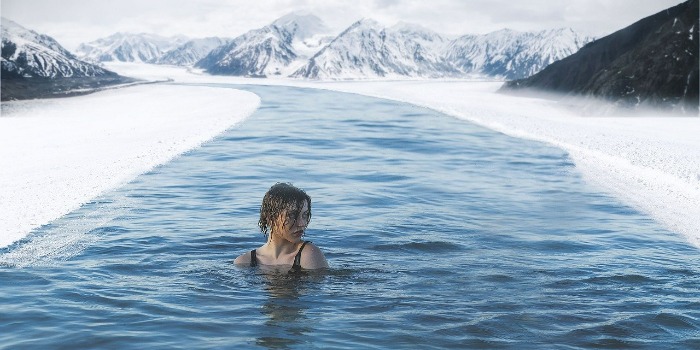Introduction to Cold Exposure Therapy and Recovery
In recent years, cold exposure therapy has emerged as a popular method for enhancing physical recovery and promoting overall well-being. This practice involves deliberately exposing the body to cold temperatures through ice baths, cold showers, or outdoor activities in chilly environments. The benefits of this therapy extend beyond mere sensation, tapping into a range of physiological responses that can speed up recovery from exercise, reduce inflammation, and improve mental resilience. In this article, we will explore how cold exposure influences the body, the mechanisms behind its recovery benefits, best practices for safely incorporating it into your routine, and current scientific insights that support its use. Understanding these elements can help individuals optimize their recovery strategies and harness the power of cold exposure effectively.
The Physiology of Cold Exposure
When the body encounters cold temperatures, several key physiological responses are triggered. Initially, blood vessels constrict in a process called vasoconstriction, which limits blood flow to the skin and extremities to preserve core body heat. This constriction helps reduce inflammation by decreasing fluid accumulation in tissues. Simultaneously, the cold stimulates the activation of the sympathetic nervous system, leading to the release of adrenaline and noradrenaline. These hormones enhance alertness, increase metabolic rate, and can reduce the perception of pain. Additionally, prolonged exposure can elicit a mild hormetic stress response, where low levels of stress stimulate adaptive processes that strengthen cellular resilience and improve recovery capacity. This complex interplay of effects forms the foundation for cold therapy’s healing benefits.
Cold Exposure and Inflammation Reduction
One of the most valued benefits of cold exposure therapy is its ability to mitigate inflammation and muscle soreness after intense physical activity. Inflammation is a natural part of the healing process, but excessive or prolonged inflammation can delay recovery and contribute to chronic pain. By lowering the temperature of tissues, cold therapy slows cellular metabolism, reducing the production of pro-inflammatory substances. The resulting vasoconstriction limits the infiltration of inflammatory cells, effectively dampening the inflammatory cascade. Athletes and rehabilitation specialists use ice baths or localized cold packs to accelerate recovery times by minimizing these inflammatory responses. However, timing and duration are critical: too long or improperly timed exposure can impair muscle function and repair, emphasizing the importance of an informed approach.
Enhancing Mental Resilience and Stress Tolerance
Beyond the physical, cold exposure therapy significantly impacts mental health and stress management. Repeated exposure to cold conditions has been shown to promote psychological resilience by activating the body’s stress response in a controlled, manageable way. This exposure trains the autonomic nervous system, improving one’s ability to regulate stress under challenging situations. Cold immersion has also been linked to increased production of mood-enhancing neurotransmitters like dopamine and endorphins, boosting overall emotional well-being. Furthermore, the ritualistic nature of cold showers or ice baths can establish mental discipline and promote mindfulness, helping practitioners maintain focus and composure in daily life. These psychological benefits contribute to more holistic recovery strategies that blend body and mind.
Practical Guidelines for Safe Cold Exposure
Incorporating cold exposure therapy into a recovery regimen requires careful consideration to maximize benefits while minimizing risks. Beginners should start gradually, with short durations of 30 seconds to 2 minutes in moderately cold water (around 10-15°C/50-59°F), progressively increasing exposure time and intensity as tolerance builds. It is important to avoid prolonged exposure that could lead to hypothermia or frostbite. Attention to proper breathing techniques during immersion can also help manage discomfort and maintain calm. Individuals with cardiovascular issues, Raynaud’s syndrome, or other specific health conditions should consult healthcare professionals prior to attempting cold exposure. Additionally, cold therapy is most effective when combined with other recovery practices such as nutrition, hydration, and rest, forming a balanced approach to physical and mental rejuvenation.
Scientific Evidence and Emerging Research
While cold exposure therapy has been utilized for centuries, recent scientific studies have provided more rigorous support for its use in recovery and health optimization. Research has demonstrated measurable improvements in muscle soreness reduction, inflammation markers, and enhanced immune responses following cold water immersion. However, some studies highlight variability in individual response, indicating that genetics, baseline fitness, and adaptation levels influence outcomes. Ongoing research is exploring how cold exposure impacts cellular processes such as mitochondrial function and autophagy, potentially unlocking further therapeutic benefits. As the field advances, personalized protocols and deeper mechanistic insights will enable more targeted, effective use of cold exposure to support recovery and performance in diverse populations.
Cold exposure therapy offers a multifaceted approach to recovery that integrates physiological, psychological, and practical dimensions. By understanding the body’s response to cold stimuli, harnessing its anti-inflammatory effects, and developing mental resilience, individuals can achieve more efficient healing and improved well-being. Safe and progressive implementation is key to unlocking these benefits while avoiding potential pitfalls. The growing body of scientific evidence continues to validate this ancient practice, encouraging its thoughtful integration into modern recovery strategies. For those seeking a natural, holistic way to support recovery and stress management, cold exposure therapy provides a compelling option that blends tradition with cutting-edge science.
